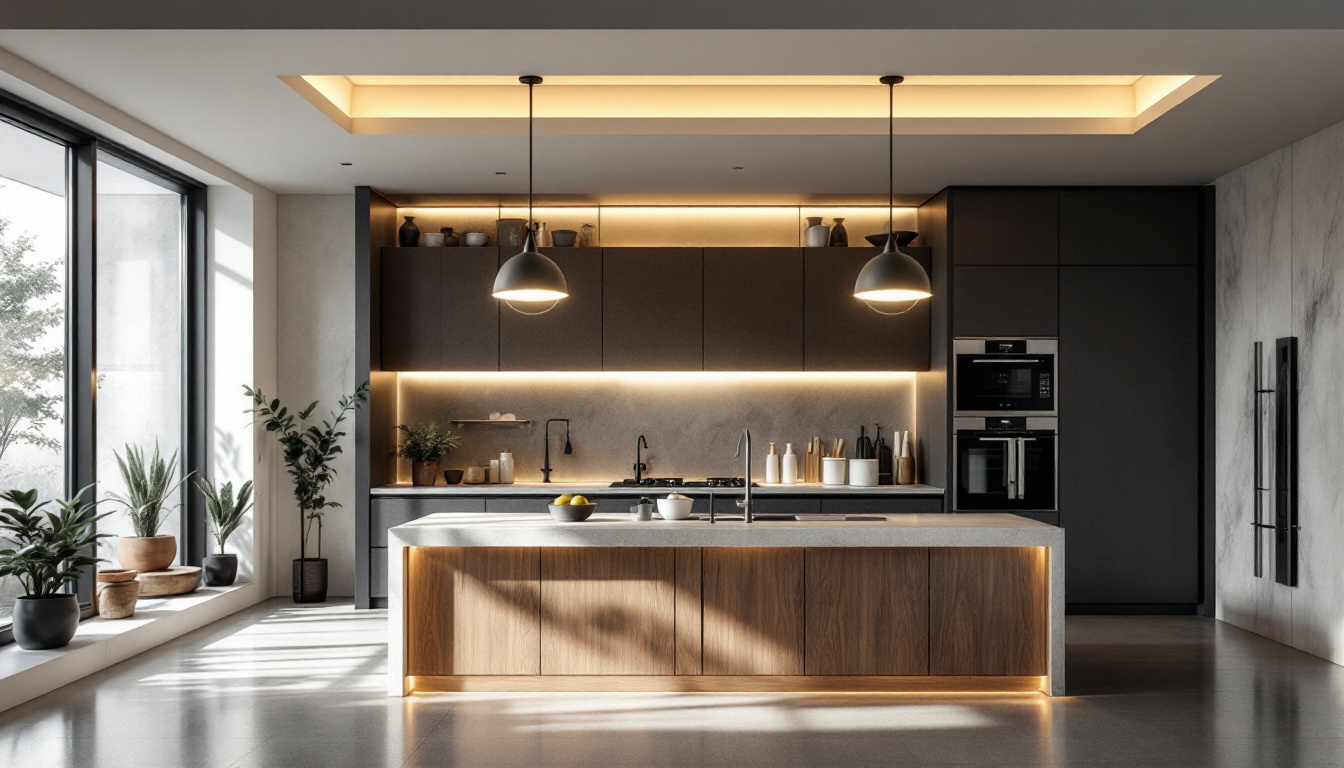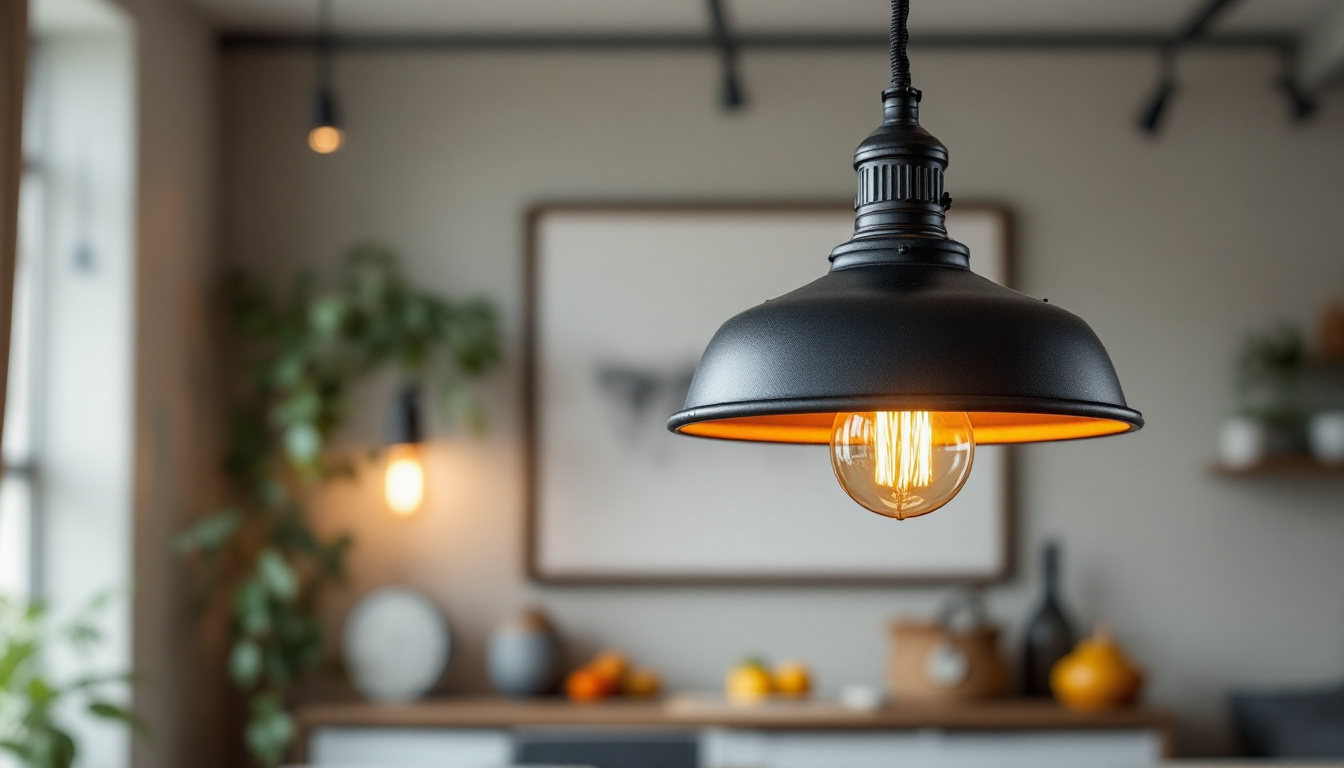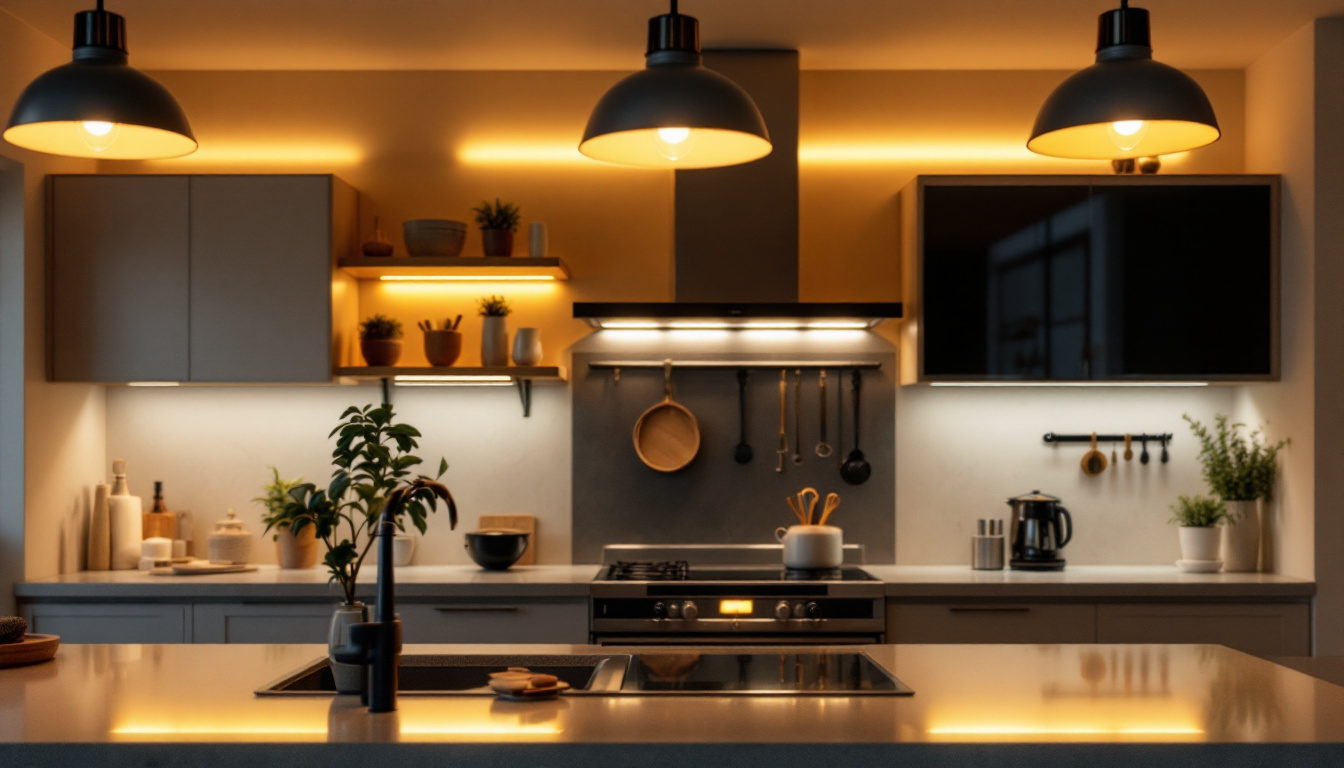
flush kitchen ceiling lights are an essential component of modern kitchen design, providing both functional and aesthetic benefits. These fixtures are mounted directly against the ceiling, offering a sleek and unobtrusive look that complements various interior styles. For lighting contractors, understanding the nuances of flush ceiling lights is crucial for delivering quality installations that meet client expectations.
This handbook aims to equip lighting contractors with comprehensive knowledge about flush kitchen ceiling lights, covering everything from design considerations to installation techniques. By mastering these elements, contractors can enhance their service offerings and ensure client satisfaction.
Flush ceiling lights come in various styles and designs, each serving unique purposes and aesthetic preferences. Understanding these types is vital for lighting contractors to recommend the best options to their clients.
Standard flush mounts are the most common type of ceiling light used in kitchens. They typically consist of a simple, round or square design that houses one or more bulbs. These fixtures are ideal for providing general illumination and can be found in various finishes, such as chrome, brushed nickel, or matte black, allowing for seamless integration into any kitchen decor.
When selecting standard flush mounts, lighting contractors should consider the height of the ceiling and the size of the kitchen. A larger kitchen may benefit from multiple fixtures or a larger flush mount to ensure adequate lighting coverage.
LED flush mounts have gained popularity due to their energy efficiency and longevity. These fixtures use LED technology to provide bright, even lighting while consuming significantly less energy than traditional incandescent bulbs. Many LED flush mounts also come with adjustable color temperatures, allowing homeowners to customize the ambiance of their kitchen.
For contractors, promoting LED flush mounts can be a selling point, especially for clients looking to reduce energy costs. Additionally, these fixtures often require less maintenance due to their extended lifespan, making them an attractive option for homeowners.
decorative flush mounts add a touch of elegance and style to kitchen spaces. These fixtures often feature intricate designs, glass shades, or unique materials that can serve as focal points in the room. While they provide general illumination, decorative flush mounts can also enhance the overall aesthetic of the kitchen.
When recommending decorative flush mounts, contractors should consider the kitchen’s overall design theme. A well-chosen decorative fixture can elevate the space and create a cohesive look.
Flush kitchen ceiling lights offer numerous benefits that make them an ideal choice for homeowners and contractors alike. Understanding these advantages can help contractors effectively communicate their value to clients.
One of the primary benefits of flush ceiling lights is their space-saving design. Unlike pendant lights or chandeliers, flush mounts do not hang down from the ceiling, making them perfect for kitchens with lower ceilings or limited vertical space. This design allows for maximum headroom and minimizes the risk of bumping into fixtures.
For contractors working in smaller kitchens, recommending flush mounts can significantly enhance the functionality of the space without compromising on style.
Flush kitchen ceiling lights come in a variety of styles, sizes, and finishes, making them highly versatile. This variety allows contractors to cater to different client preferences and design schemes. Whether a client desires a minimalist look or a more ornate fixture, there is a flush mount option available to suit their needs.
Moreover, many flush mounts are compatible with dimmer switches, providing additional flexibility in lighting control. This feature allows homeowners to adjust the brightness based on the time of day or the specific activity taking place in the kitchen.
Flush ceiling lights are generally straightforward to install, making them a preferred choice for many contractors. Their simple design often requires fewer components than more complex lighting fixtures, reducing installation time and labor costs.
Additionally, flush mounts are typically easy to clean and maintain. Their close-to-ceiling design minimizes dust accumulation, and many fixtures can be wiped down with a damp cloth, ensuring they remain looking fresh and new for years to come.
Selecting the appropriate flush kitchen ceiling light involves considering various factors, including the kitchen’s size, style, and lighting needs. Contractors must guide their clients through this decision-making process to ensure satisfaction with the final choice.
The size and layout of the kitchen play a significant role in determining the type and number of flush ceiling lights required. A larger kitchen may necessitate multiple fixtures to ensure even lighting throughout the space. In contrast, a smaller kitchen might only need a single, well-placed flush mount.
Contractors should also consider the layout of the kitchen, including the placement of cabinets, islands, and appliances. Properly positioning flush mounts can help eliminate shadows and enhance visibility in work areas.
Aesthetic preferences are crucial in selecting the right flush kitchen ceiling light. Contractors should engage clients in discussions about their design style, whether it be modern, traditional, or eclectic. Understanding these preferences will help in recommending fixtures that align with the overall kitchen design.
Additionally, color and finish should be taken into account. A well-coordinated fixture can complement cabinetry, countertops, and other design elements, creating a harmonious look.
Different kitchen activities require varying levels of illumination. Cooking, cleaning, and entertaining all demand different lighting conditions. Contractors should assess the specific lighting needs of their clients and recommend flush mounts that provide adequate brightness for these tasks.
For instance, if a client frequently cooks or bakes, recommending a fixture with higher lumen output or adjustable brightness may be beneficial. Understanding these needs will ensure that the chosen flush mount enhances the kitchen’s functionality.
Proper installation is key to ensuring the longevity and effectiveness of flush kitchen ceiling lights. Contractors should follow best practices to achieve optimal results and avoid common pitfalls.
Each flush mount fixture comes with specific installation instructions provided by the manufacturer. Contractors should always refer to these guidelines to ensure compliance with safety standards and optimal performance. Following these instructions will help prevent issues such as electrical malfunctions or improper mounting.
Additionally, being familiar with the manufacturer’s warranty policies can aid in addressing any potential issues that may arise post-installation.
Electrical connections are critical for the safe operation of flush ceiling lights. Contractors must ensure that all wiring is correctly connected and that the circuit can handle the load of the new fixture. This may involve checking the existing wiring and making any necessary upgrades to accommodate the new installation.
Using a voltage tester to confirm that the power is off before beginning the installation is also essential for safety. Proper grounding and securing connections will help prevent electrical hazards.
Positioning flush kitchen ceiling lights correctly is vital for achieving even light distribution throughout the space. Contractors should consider the layout of the kitchen and the placement of key areas, such as countertops and islands, when determining where to install fixtures.
For larger kitchens, using multiple flush mounts in a grid pattern can help ensure that all areas receive adequate lighting. Additionally, contractors should take care to avoid placing fixtures too close to walls, as this can create shadows and diminish the effectiveness of the lighting.
Regular maintenance and troubleshooting are essential for keeping flush kitchen ceiling lights in optimal working condition. Contractors should educate clients on how to care for their fixtures and address common issues that may arise.
Flush ceiling lights should be cleaned regularly to maintain their appearance and functionality. Contractors can recommend using a soft, damp cloth to wipe down fixtures and remove dust and grease buildup. For glass shades, a gentle glass cleaner can help restore clarity and shine.
Educating clients on the importance of routine cleaning can prolong the life of the fixtures and ensure they continue to provide effective lighting.
Common issues with flush kitchen ceiling lights may include flickering bulbs, dim lighting, or complete fixture failure. Contractors should guide clients on how to identify these problems and troubleshoot them effectively.
For flickering bulbs, checking the connections and replacing the bulb may resolve the issue. If a fixture fails completely, it may require a replacement or professional inspection to identify underlying electrical problems.
While many maintenance tasks can be handled by homeowners, some issues may require professional assistance. Contractors should advise clients on when to seek help, such as when dealing with complex electrical problems or if they are uncomfortable performing maintenance tasks themselves.
Encouraging clients to prioritize safety and seek professional help when needed can prevent accidents and ensure the longevity of their lighting fixtures.
Flush kitchen ceiling lights are an integral part of modern kitchen design, offering versatility, efficiency, and style. For lighting contractors, understanding the various types, benefits, and installation techniques associated with these fixtures is essential for delivering high-quality service to clients.
By guiding clients through the selection process, ensuring proper installation, and providing maintenance advice, contractors can enhance their reputation and build lasting relationships with their customers. As the demand for stylish and functional kitchen lighting continues to grow, staying informed and skilled in flush ceiling light installations will position contractors for success in the competitive lighting industry.
Ready to elevate your lighting projects with the finest flush kitchen ceiling lights on the market? Look no further than LumenWholesale, where we provide contractors with exceptional, spec-grade lighting solutions at unbeatable wholesale prices. Say goodbye to local distributor markups and hello to our extensive selection that meets rigorous industry standards. With LumenWholesale, you’ll enjoy the convenience of bulk buying with free shipping, ensuring you get the best value without any hidden costs. Don’t compromise on quality or price. Discover wholesale lighting at the best value today and light up your kitchen projects with confidence.

Explore the key compliance differences between LED and HID bulbs in this insightful guide for lighting contractors.

Explore the advantages and drawbacks of outdoor solar light posts for lighting contractors.

Discover the essential guide for lighting contractors with our comprehensive checklist for modern industrial pendant lights.

Explore how over cupboard lighting is transforming the business landscape for lighting contractors.